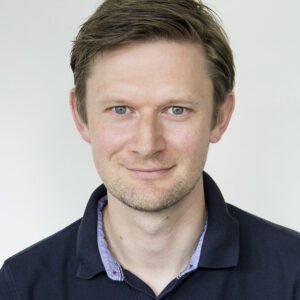Biography
I was born in Fürth, Germany, and studied Molecular Medicine at the University of Erlangen, Germany. Over the last decade, my research focused on the biological aspects of cell motility, cytoskeletal dynamics, chemoattractant sensing and cell-cell communication and how these coordinate single cell and population dynamics during innate immune responses. During my PhD work we challenged the paradigm that cell migration necessitates adhesive interactions between cells and their environment. We made the surprising observation that immune cell motility outside the vasculature relies almost exclusively on shape changes driven by the actomyosin cytoskeleton. These findings significantly contributed to our current view that immune cell migration within tissues is largely independent from the molecular composition of the environment, and were awarded the Otto-Westphal-Prize of the German Society for Immunology. My postdoctoral work provided the first molecular map of the multi-step process that leads to the accumulation of sentinel immune cells, best described by a model of swarming movements. This work revealed a mechanism by which these cells communicate with each other and bring about their collective behavior in inflamed and infected tissues. The Robert-Koch Foundation recognized this work with their Postdoctoral Award. Since January 2015 I am heading the MPRG “Immune Cell Dynamics” in Freiburg. In 2016, the European Research Council decided to support our work with an ERC-StG.
Education and positions held
- 2015 – present
- MPI of Immunobiology and Epigenetics (MPRGL)
- 2009 – 2014
- Laboratory of Systems Biology, NIAID, National Institutes of Health, Bethesda, USA (Postdoc)
- 2004 – 2009
- MPI of Biochemistry/LMU Munich (PhD thesis)
- 1999 – 2004
- University of Erlangen-Nurembourg, Germany (Molecular Medicine)
Research Summary
The goal of our research is to understand how innate immune cells coordinate their tissue dynamics and communicate with each other to achieve an optimal innate immune response. In particular, we are interested in the mechanisms that shape single cell and population dynamics of immune cells in the complexity of inflamed and infected tissues. We seek to understand the spectrum of migrating immune cells, ranging from fast-moving sentinel cells (e.g. neutrophils) to very slow tissue-resident immune cells (e.g. mast cells).While we have learned from in vitro studies how defined stimuli can alter immune cell function under well-defined experimental conditions, we hardly understand how innate immune cells control their dynamics in physiological environments. Visualization of innate immune responses in inflamed and infected mouse tissues by two-photon intravital microscopy is our starting point for understanding immune cell dynamics in their natural environment. We combine live cell imaging in mice, tissue explants and 3D in vitro models with mouse genetics, models of inflammation and infection, and novel, often custom-built approaches to unmask the functional regulation of immune cell dynamics. Our research seeks to find a conceptual framework how innate immune cells integrate the plethora of signals arising in inflammatory environments and coordinate their dynamic behaviour with other tissue-resident immune cells in the context of inflammatory and infectious diseases.
Key publications
- Lämmermann T, Bader BL, Monkley SJ, Worbs T, Wedlich-Söldner R, Hirsch K, Keller M, Förster R, Critchley DR, Fässler R, Sixt M. Rapid leukocyte migration by integrin-independent flowing and squeezing. Nature. 2008 453(7191): 51-55.
- Lämmermann T, Afonso PV, Angermann BR, Wang JM, Kastenmüller W, Parent CA, Germain RN. Neutrophil swarms require LTB4 and integrins at sites of cell death in vivo. Nature. 2013 498(7454): 371-5.
- Lämmermann T, and Sixt M. Mechanical modes of “amoeboid“ cell migration. Curr Opin Cell Biol. 2009 21(5): 636-644. Review.
- Kienle K, and Lämmermann T. Neutrophil swarming: an essential process of the neutrophil tissue response. Immunol Rev. 2016 273(1): 76-93. Review.
- Lämmermann T, Kastenmüller W. Concepts of GPCR-controlled navigation in the immune system. Immunol Rev. 2019 289(1): 205-231. Review.

